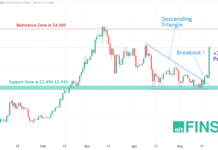One of the biggest changes that those dealing with cryptos have to learn is what futures contracts are and how they work. Futures are different from traditional transactions, where the parties involved agree on the price of services or goods and the thing is settled. When it comes to futures contracts, they are settlements that are scheduled for a specific time in the future and include an exact amount which must be paid. These are the two biggest elements involved – the settlement’s date and price.
Regardless of the market price at the time of the contract’s execution, both parties have to respect the deal that was made in the past. The terms of the deal are struck when the contract is made, and cannot be changed. The idea behind this is risk management, rather than the goal of making a profit, making futures contracts very useful when trading in assets known for price swings.
Additionally, the trading and negotiations are done on futures exchanges, which are being used as intermediaries.
How do these contracts actually work?
Similarly to margin trading, futures contracts have two positions, short and long. Long positions are asset purchases at the date when the contract expires, while short positions include the sale of assets at the contract’s expiration date. In both cases, the price is predetermined. Sellers usually take long positions to get assets like Bitcoin at a higher price, while the buyers are looking for a favorable price to buy such assets.
Both parties are trying to make the best deal, and protect themselves from the asset’s volatility. There are also those who use these contracts as speculative means, rather than a mechanism aimed at protecting themselves. They go long during price dips, and the contracts gain value as the prices increase. That way, the investors can choose to do the trade before the contract actually expires, while the price is favorable.
Bitcoin futures
When it comes to Bitcoin futures, traders can use futures contracts for speculating on BTC price, even if they don’t actually own BTC tokens. In a way, investors can guess a price of BTC in the future, and use contracts to ‘bet’ on it. This can have significant consequences when it comes to trading.
Futures can allow Bitcoin to trade via regulated exchanges since it doesn’t have its own regulations, which is quite an advantage for investors. When BTC is being traded on exchanges, they are bound by the laws of the country in which they are based. This may lead to various issues if the traders are from different countries, with contradicting laws. Bitcoin futures offer loopholes in such cases, and they even allow price speculations for those living in countries where BTC trading is banned.
Bitcoin futures trading
Regulations regarding the trade of Bitcoin futures are still not properly developed, although this is expected to change in the near future. Currently, a very small number of exchanges allows BTC futures trading, like BitMEX or OKCoin, the CME (Chicago Mercantile Exchange) and the CBOE (Chicago Board Options Exchange).
The trading of Bitcoin futures at CME requires traders to find a broker that uses CME and that entity needs to agree to make a bet on a trader’s behalf, for a fee. After that, the broker can open a margin account with the original trader, if the conditions have been met.
When it comes to establishing a price for Bitcoin futures, there are three factors – the buying price, the selling price, and the expiration date of the contract. Those interacting with the prices are known as market makers, individual speculators, or arbitrageurs.
Additional details
Usually, each contract requires a minimum tick size, which is $25, meaning that the price cannot change in raises below $25 per contract. Additionally, there exists a price fluctuation cap that is 20% up or down in regards to the settlement price. That way, a common phenomenon of runaway flash crashes can be limited.
When it comes to CME, it should be said that it allows contract sizes to reach a maximum of 5 BTC.
Bitcoin futures are not that large as of yet, but they continue to gain popularity, and this is expected to change in the future. More interest means more use, which is expected to lead to more regulations, and official rules, which will, once again, inspire more interest.















